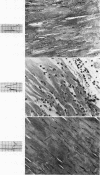Abstract
The effects of coronary artery reperfusion 3 hr after coronary occlusion on contractile function and the development of myocardial damage at 24 hr was studied experimentally. In 14 control and 6 reperfused dogs, relationships between epicardial ST segment elevation 15 min after coronary occlusion and myocardial creatine phosphokinase activity (CPK) and histologic appearance 24 hr later were examined. The electrocardiograms were recorded from 10 to 15 sites on the left ventricular epicardium and transmural samples for CPK and histology were obtained from the same sites where epicardial electrocardiograms had been recorded. An inverse relation existed between ST segment elevation (mv) 15 min after occlusion and log CPK activity (IU/ mg of protein) 24 hr later, log CPK = − 0.06ST + 1.26. In dogs subjected to coronary artery reperfusion, there was significantly less CPK depression (log CPK = − 0.01ST + 1.31, [P < 0.01]) than that expected from the control group. In the control group 97% of specimens showing ST segment elevations over 2 mv at 15 min showed abnormal histology 24 hr later. In contrast, in the reperfused group 43% of sites exhibiting elevated ST segment at 15 min showed abnormal histology 24 hr later. In six additional dogs it was shown that the paradoxical movement of the left ventricular wall could be reversed within 1 hr of perfusion. Therefore, by enzymatic and histologic criteria, as well as by functional assessment, coronary artery reperfusion 3 hr after occlusion resulted in salvage of myocardial tissue.
Full text
PDF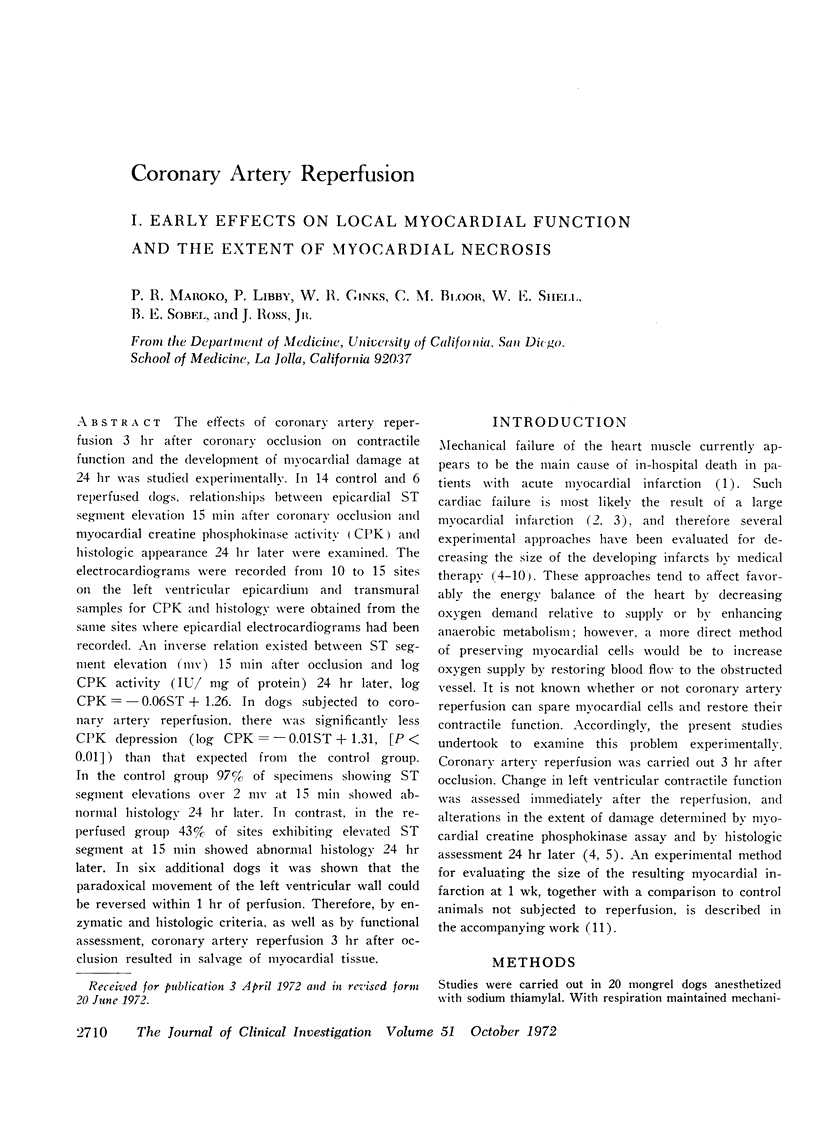
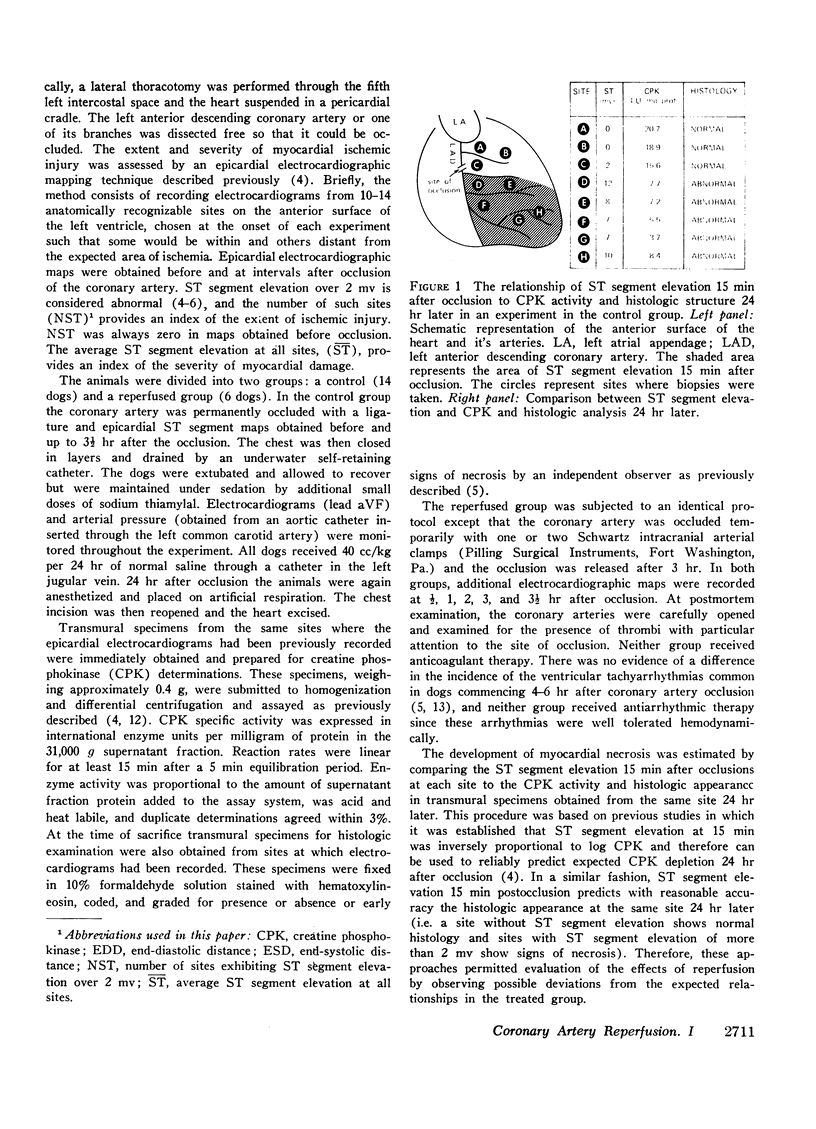
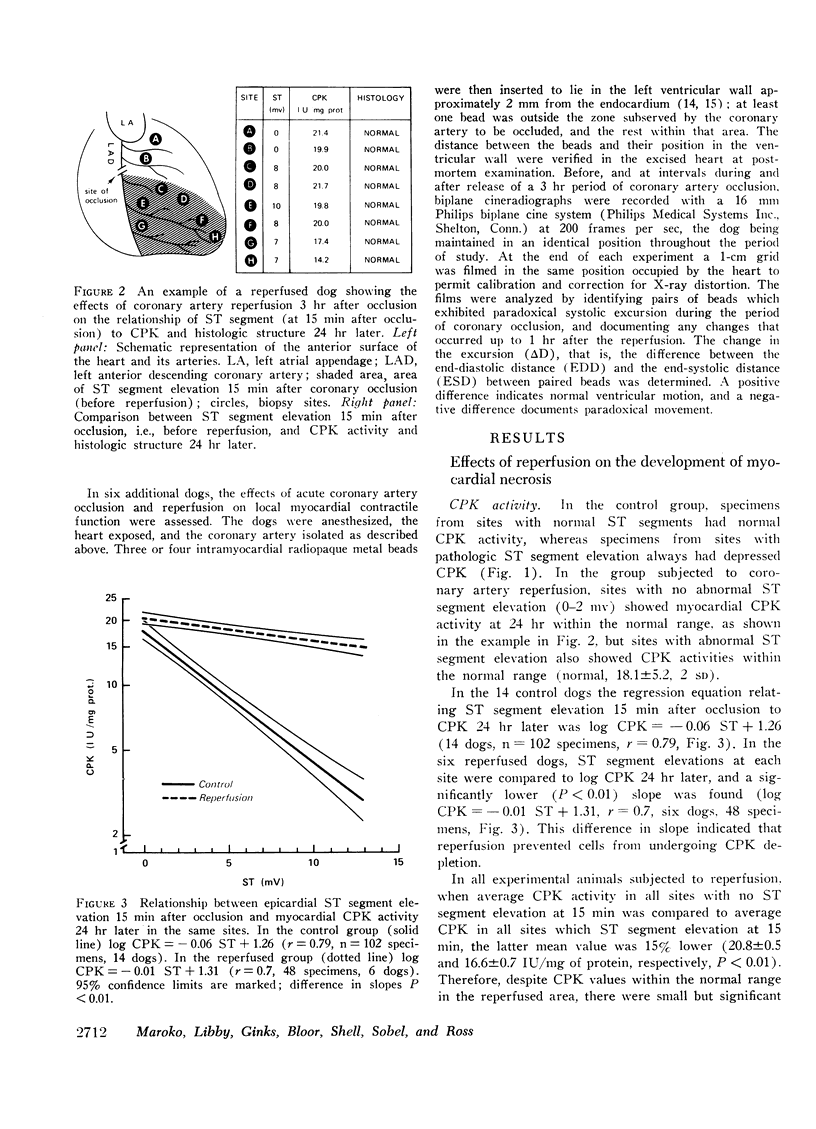
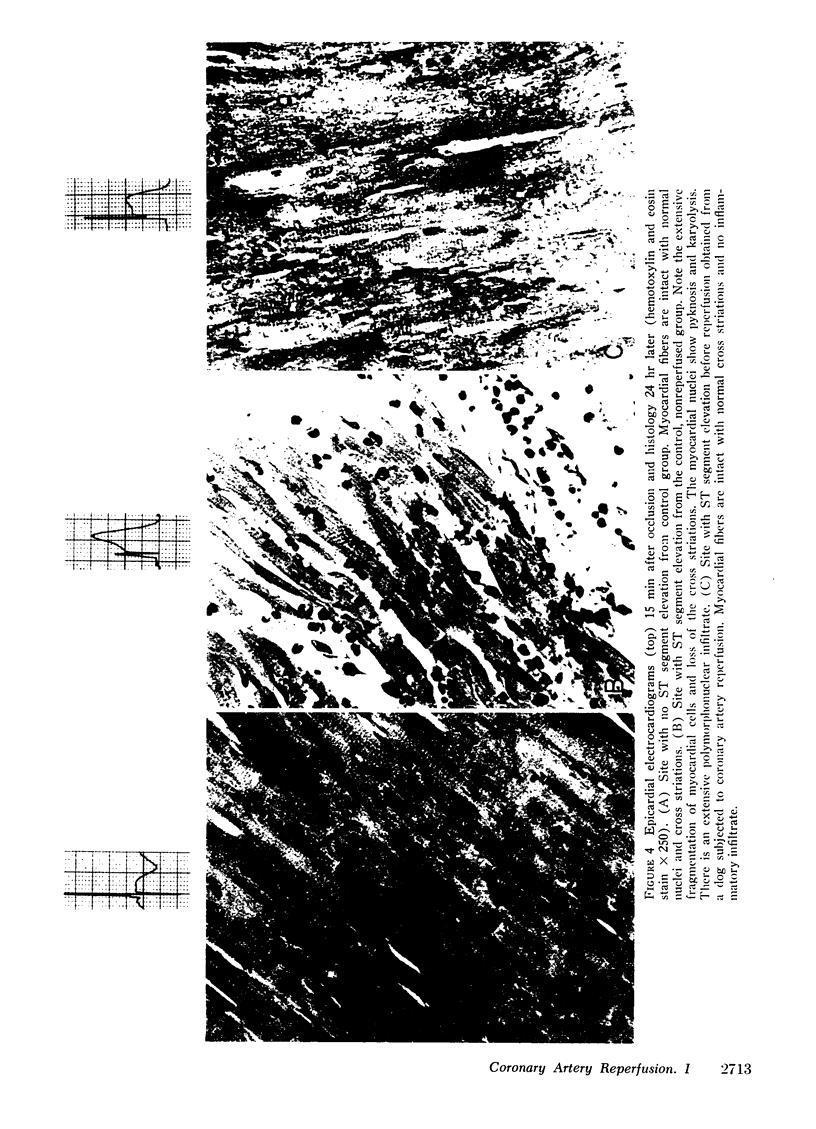
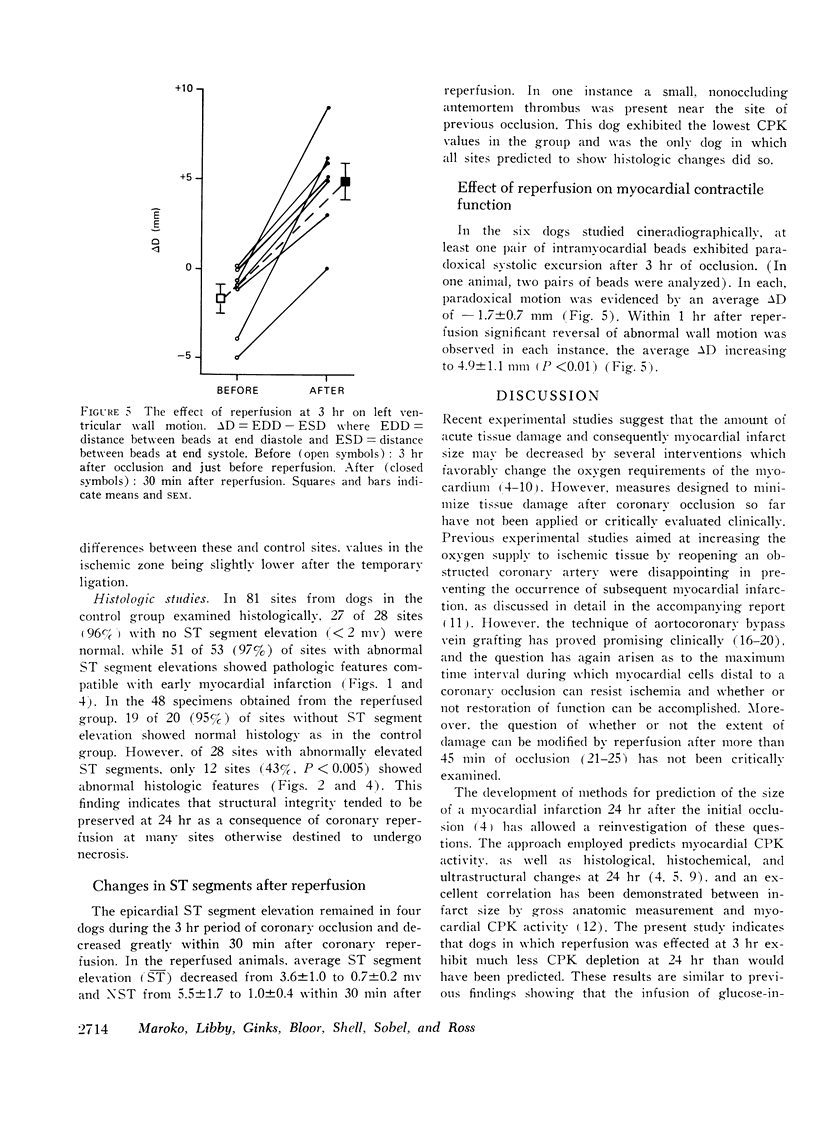
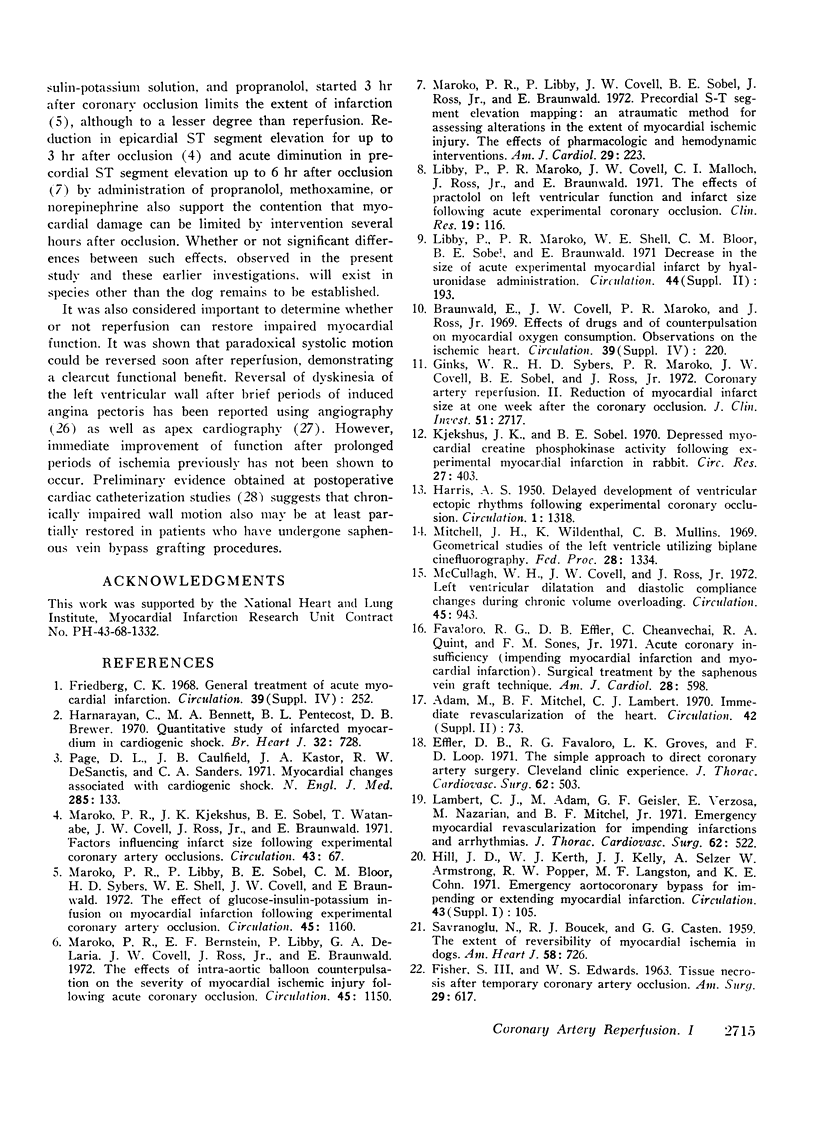
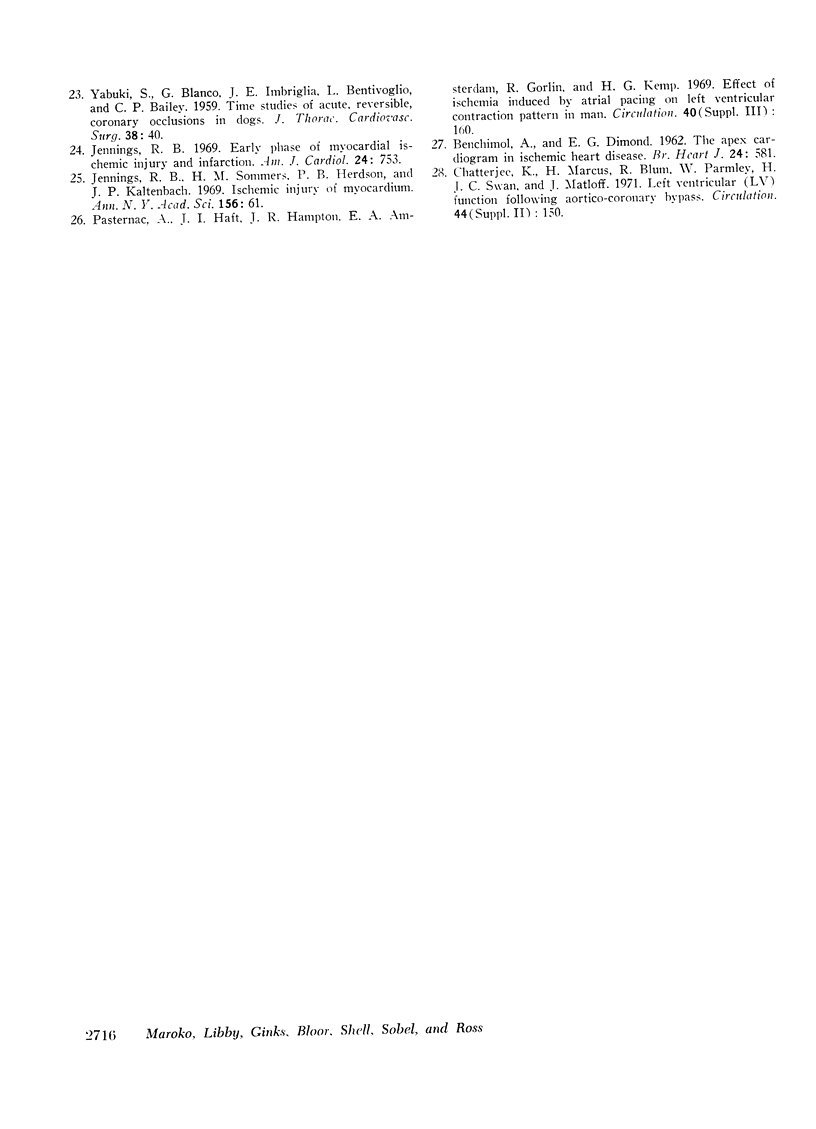
Images in this article
Selected References
These references are in PubMed. This may not be the complete list of references from this article.
- BENCHIMOL A., DIMOND E. G. The apex cardiogram in ischaemic heart disease. Br Heart J. 1962 Sep;24:581–594. doi: 10.1136/hrt.24.5.581. [DOI] [PMC free article] [PubMed] [Google Scholar]
- Effler D. B., Favaloro R. G., Groves L. K., Loop F. D. The simple approach to direct coronary artery surgery. Cleveland Clinic experience. J Thorac Cardiovasc Surg. 1971 Oct;62(4):503–510. [PubMed] [Google Scholar]
- FISCHER S., 3rd, EDWARDS W. S. TISSUE NECROSIS AFTER TEMPORARY CORONARY ARTERY OCCLUSION. Am Surg. 1963 Sep;29:617–619. [PubMed] [Google Scholar]
- Favaloro R. G., Effler D. B., Cheanvechai C., Quint R. A., Sones F. M., Jr Acute coronary insufficiency (impending myocardial infarction and myocardial infarction): surgical treatment by the saphenous vein graft technique. Am J Cardiol. 1971 Nov;28(5):598–607. doi: 10.1016/0002-9149(71)90104-4. [DOI] [PubMed] [Google Scholar]
- Ginks W. R., Sybers H. D., Maroko P. R., Covell J. W., Sobel B. E., Ross J., Jr Coronary artery reperfusion. II. Reduction of myocardial infarct size at 1 week after the coronary occlusion. J Clin Invest. 1972 Oct;51(10):2717–2723. doi: 10.1172/JCI107091. [DOI] [PMC free article] [PubMed] [Google Scholar]
- HARRIS A. S. Delayed development of ventricular ectopic rhythms following experimental coronary occlusion. Circulation. 1950 Jun;1(6):1318–1328. doi: 10.1161/01.cir.1.6.1318. [DOI] [PubMed] [Google Scholar]
- Harnarayan C., Bennett M. A., Pentecost B. L., Brewer D. B. Quantitative study of infarcted myocardium in cardiogenic shock. Br Heart J. 1970 Nov;32(6):728–732. doi: 10.1136/hrt.32.6.728. [DOI] [PMC free article] [PubMed] [Google Scholar]
- Jennings R. B. Early phase of myocardial ischemic injury and infarction. Am J Cardiol. 1969 Dec;24(6):753–765. doi: 10.1016/0002-9149(69)90464-0. [DOI] [PubMed] [Google Scholar]
- Kjekshus J. K., Sobel B. E. Depressed myocardial creatine phosphokinase activity following experimental myocardial infarction in rabbit. Circ Res. 1970 Sep;27(3):403–414. doi: 10.1161/01.res.27.3.403. [DOI] [PubMed] [Google Scholar]
- Lambert C. J., Adam M., Geisler G. F., Verzosa E., Nazarian M., Mitchel B. F., Jr Emergency myocardial revascularization for impending infarctions and arrhythmias. J Thorac Cardiovasc Surg. 1971 Oct;62(4):522–528. [PubMed] [Google Scholar]
- Maroko P. R., Bernstein E. F., Libby P., DeLaria G. A., Covell J. W., Ross J., Jr, Braunwald E. Effects of intraaortic balloon counterpulsation on the severity of myocardial ischemic injury following acute coronary occlusion. Counterpulsation and myocardial injury. Circulation. 1972 Jun;45(6):1150–1159. doi: 10.1161/01.cir.45.6.1150. [DOI] [PubMed] [Google Scholar]
- Maroko P. R., Kjekshus J. K., Sobel B. E., Watanabe T., Covell J. W., Ross J., Jr, Braunwald E. Factors influencing infarct size following experimental coronary artery occlusions. Circulation. 1971 Jan;43(1):67–82. doi: 10.1161/01.cir.43.1.67. [DOI] [PubMed] [Google Scholar]
- Maroko P. R., Libby P., Covell J. W., Sobel B. E., Ross J., Jr, Braunwald E. Precordial S-T segment elevation mapping: an atraumatic method for assessing alterations in the extent of myocardial ischemic injury. The effects of pharmacologic and hemodynamic interventions. Am J Cardiol. 1972 Feb;29(2):223–230. doi: 10.1016/0002-9149(72)90633-9. [DOI] [PubMed] [Google Scholar]
- Maroko P. R., Libby P., Sobel B. E., Bloor C. M., Sybers H. D., Shell W. E., Covell J. W., Braunwald E. Effect of glucose-insulin-potassium infusion on myocardial infarction following experimental coronary artery occlusion. Circulation. 1972 Jun;45(6):1160–1175. doi: 10.1161/01.cir.45.6.1160. [DOI] [PubMed] [Google Scholar]
- McCullagh W. H., Covell J. W., Ross J., Jr Left ventricular dilatation and diastolic compliance changes during chronic volume overloading. Circulation. 1972 May;45(5):943–951. doi: 10.1161/01.cir.45.5.943. [DOI] [PubMed] [Google Scholar]
- Mitchell J. H., Wildenthal K., Mullins C. B. Geometrical studies of the left ventricle utilizing biplane cinefluorography. Fed Proc. 1969 Jul-Aug;28(4):1334–1343. [PubMed] [Google Scholar]
- Page D. L., Caulfield J. B., Kastor J. A., DeSanctis R. W., Sanders C. A. Myocardial changes associated with cardiogenic shock. N Engl J Med. 1971 Jul 15;285(3):133–137. doi: 10.1056/NEJM197107152850301. [DOI] [PubMed] [Google Scholar]
- SAVRANOGLU N., BOUCEK R. J., CASTEN G. G. The extent of reversibility of myocardial ischemia in dogs. Am Heart J. 1959 Nov;58:726–731. doi: 10.1016/0002-8703(59)90231-5. [DOI] [PubMed] [Google Scholar]
- YABUKI S., BLANCO G., IMBRIGLIA J. E., BENTIVOGLIO L., BAILEY C. P. Time studies of acute, reversible, coronary occlusions in dogs. J Thorac Cardiovasc Surg. 1959 Jul;38(1):40–45. [PubMed] [Google Scholar]



